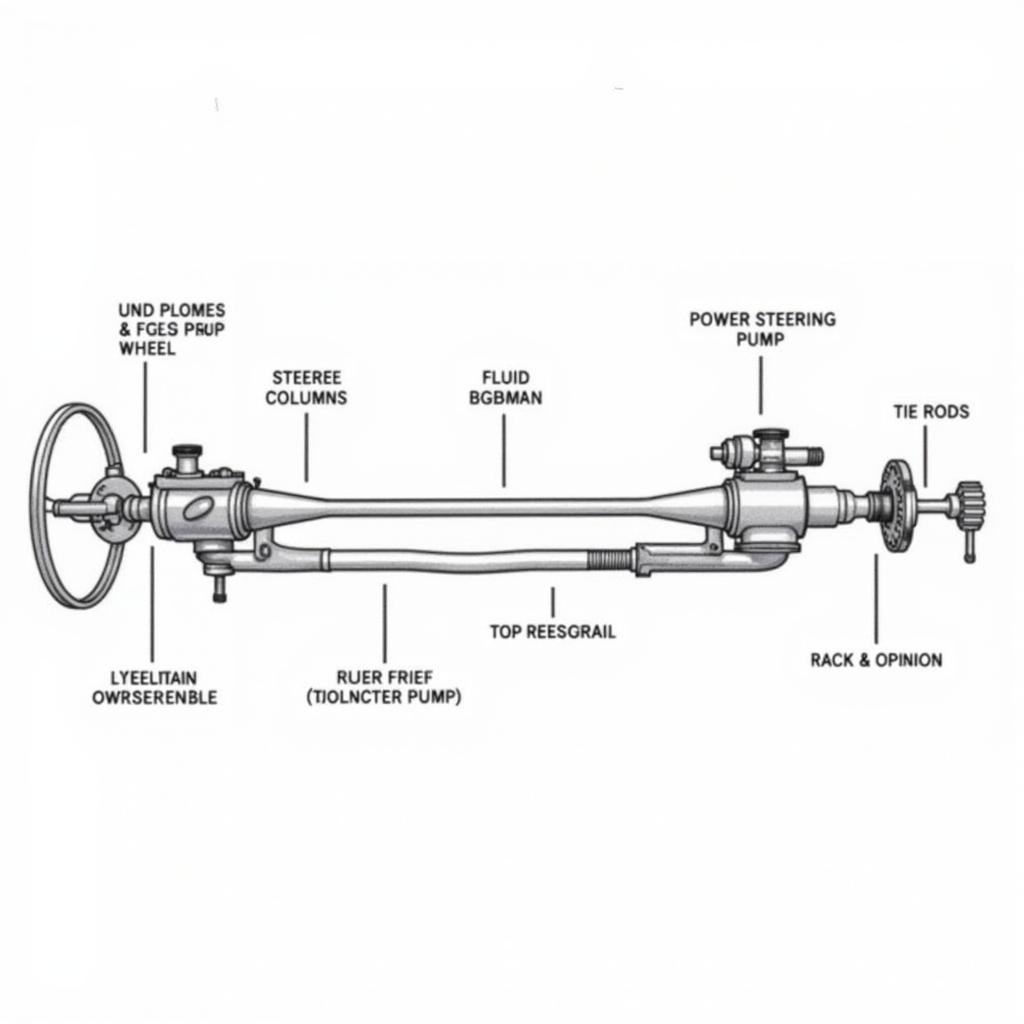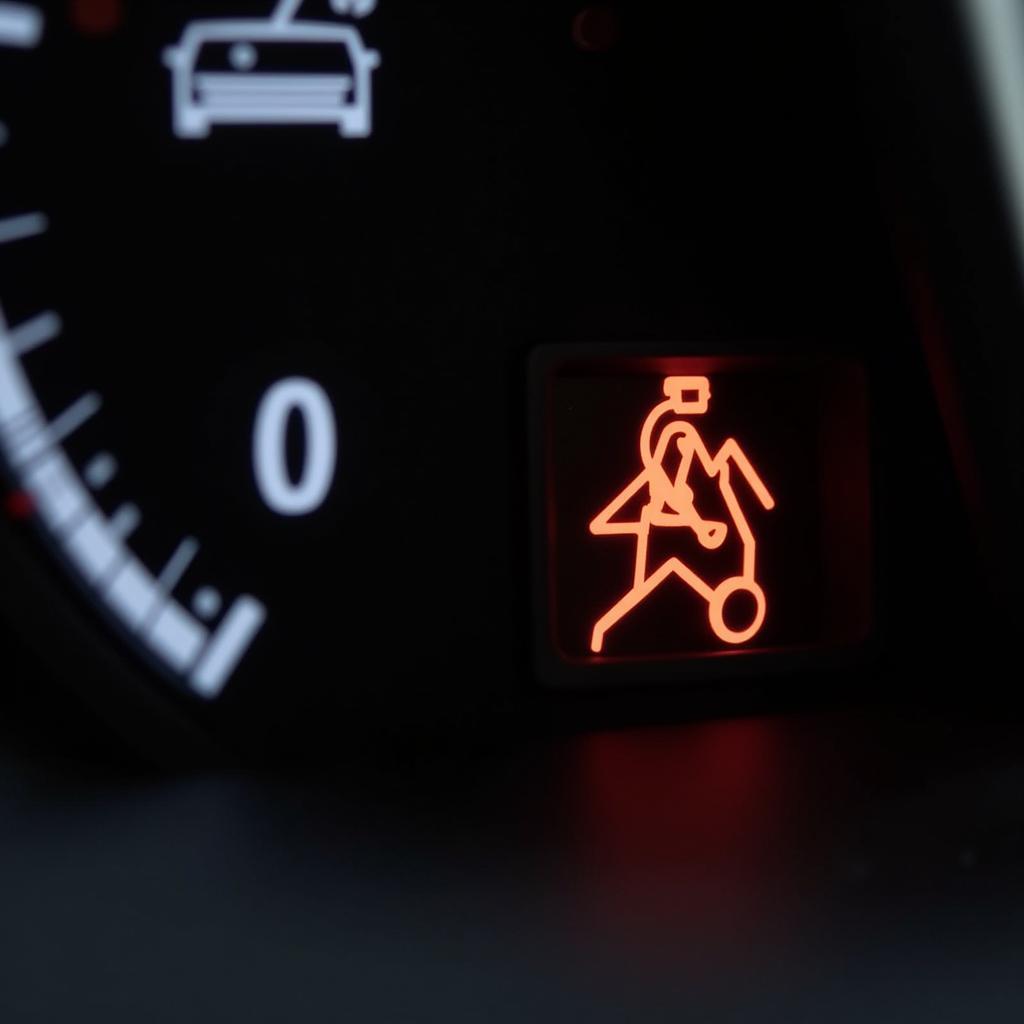What Does Service Power Steering Drive With Care Mean?
You’re driving down the road, enjoying the scenery, when suddenly a warning light pops up on your dashboard: “Service Power Steering Drive With Care.” It’s enough to make your heart skip a beat. What does it mean? Is it safe to keep driving? And most importantly, how much is this going to cost you?
Don’t panic! This warning message doesn’t necessarily mean your car is about to grind to a halt. In this article, we’ll demystify the “service power steering drive with care” warning, explore its common causes, and guide you on the necessary steps to take.
Understanding Your Power Steering System
Before we dive into the warning itself, it’s helpful to understand the basics of your car’s power steering system. In simple terms, this system makes it easier to turn the steering wheel, especially at low speeds. It does this by using hydraulic fluid pressure or electric motors to assist your steering effort.
 Car power steering system diagram
Car power steering system diagram
Without power steering, turning the wheel would require significant effort, making driving less comfortable and more tiring, particularly for maneuvering in tight spaces or at slow speeds.
Decoding the “Service Power Steering Drive With Care” Warning
The “service power steering drive with care” warning light is your car’s way of telling you there’s an issue with the power steering system. It could be something as simple as low power steering fluid or a loose connection, or it could signal a more serious problem with the pump, steering rack, or other components.
 Car dashboard displaying power steering warning light
Car dashboard displaying power steering warning light
Essentially, this warning means your power steering system may not be operating at its full capacity, and driving could become more difficult, especially at lower speeds.
Common Causes of the Power Steering Warning
There are several reasons why your car might display the “service power steering drive with care” message. Here are some of the most common culprits:
-
Low Power Steering Fluid: Just like engine oil, power steering fluid is crucial for the system to function correctly. Low fluid levels can be caused by leaks, and without sufficient fluid, the system won’t be able to generate the necessary pressure for smooth steering.
-
Worn-Out Power Steering Pump: The power steering pump is the heart of the system, responsible for pressurizing the fluid. Over time, the pump can wear out, leading to reduced performance or complete failure.
-
Faulty Steering Rack: The steering rack is a crucial component that translates the steering wheel’s rotation into the movement of the wheels. A worn or damaged steering rack can cause difficulty steering and may trigger the warning light.
-
Loose or Damaged Belts and Hoses: The power steering system relies on belts and hoses to connect various components and transmit power. Loose, cracked, or damaged belts and hoses can disrupt the system’s operation.
-
Electrical Problems: For vehicles with electric power steering systems, issues with wiring, sensors, or the electronic control unit (ECU) can also trigger the warning light.
What to Do When the Warning Light Appears
If your “service power steering drive with care” warning light illuminates, it’s essential to take action promptly. While you might not need to pull over immediately, continuing to drive with a compromised power steering system can be dangerous and potentially worsen the underlying problem.
Here’s a step-by-step guide on what to do:
- Assess the Situation: Is your steering feeling heavier than usual? Do you hear any unusual noises? Take note of any changes in your car’s behavior.
- Find a Safe Location: If possible, carefully maneuver your car to a safe location away from traffic, such as a parking lot or the side of the road.
- Check the Power Steering Fluid: If you feel comfortable doing so, open the hood and locate the power steering fluid reservoir. Check the fluid level and add more if it’s low, using the type of fluid specified in your car’s owner’s manual.
- Contact a Mechanic: If adding fluid doesn’t resolve the issue, or if you’re uncomfortable checking it yourself, it’s time to call a qualified mechanic. They can diagnose the problem accurately and recommend the necessary repairs.
 Mechanic diagnosing car power steering problem
Mechanic diagnosing car power steering problem
Preventing Future Power Steering Problems
Like most car problems, prevention is always better (and often cheaper!) than a cure. Here are some tips to keep your power steering system in top shape:
- Regular Fluid Checks and Changes: Consult your owner’s manual for the recommended power steering fluid change intervals and stick to them.
- Inspect Belts and Hoses: Regularly check the condition of the power steering belts and hoses for signs of wear and tear, such as cracks, bulges, or leaks. Replace them as needed.
- Address Leaks Promptly: If you notice any power steering fluid leaks, have them repaired by a qualified mechanic as soon as possible to prevent further damage and potential hazards.
- Avoid Extreme Driving Conditions: Prolonged driving in extreme heat or over rough terrain can put extra stress on the power steering system, potentially leading to premature wear and tear.
Conclusion
The “service power steering drive with care” warning light might seem alarming, but it’s essential to remember that it’s primarily a warning signal. By understanding the potential causes, taking appropriate precautions, and seeking professional help when needed, you can address the issue effectively and ensure your vehicle remains safe and enjoyable to drive.

